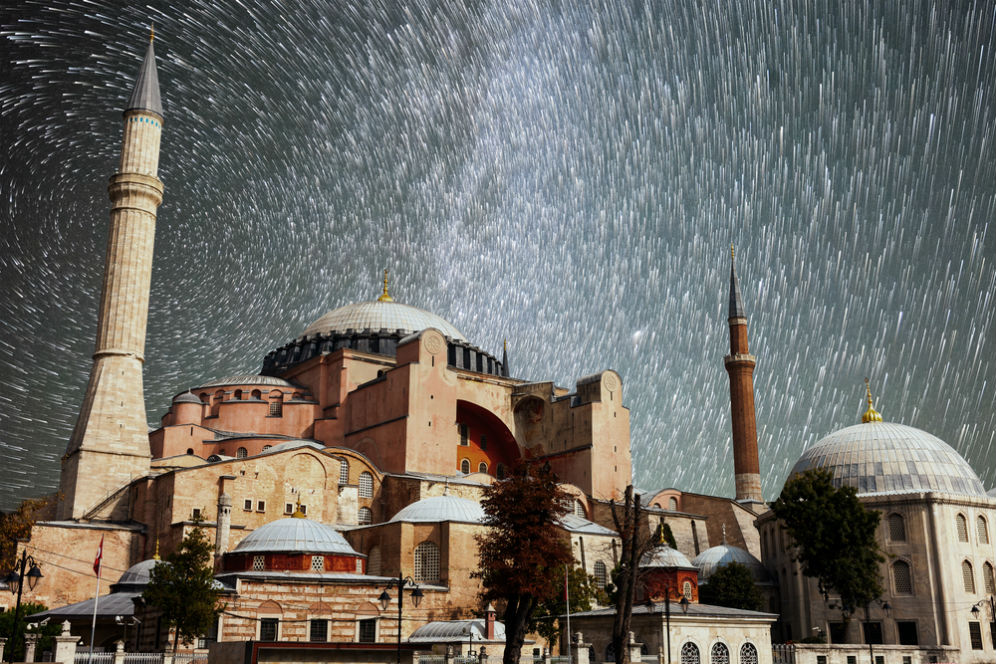The Cathedral of St. Sophia rises above Constantinople, now Istanbul, nearly one and a half thousand years. It began to be built in 532, when the Byzantine Emperor Justinian I ordered to recreate the temple on the site of the Basilica burned during the Nick uprising.
The name of the temple is not connected with a woman, as it might seem, just from the Greek language Ayia-Sophia is translated as “holy wisdom”. The construction of the cathedral was completed in just 5 years. If you believe the historical chronicles, then 10 thousand people worked at the site simultaneously, and the total value of the temple exceeded the 3 annual budget of the Byzantine Empire.
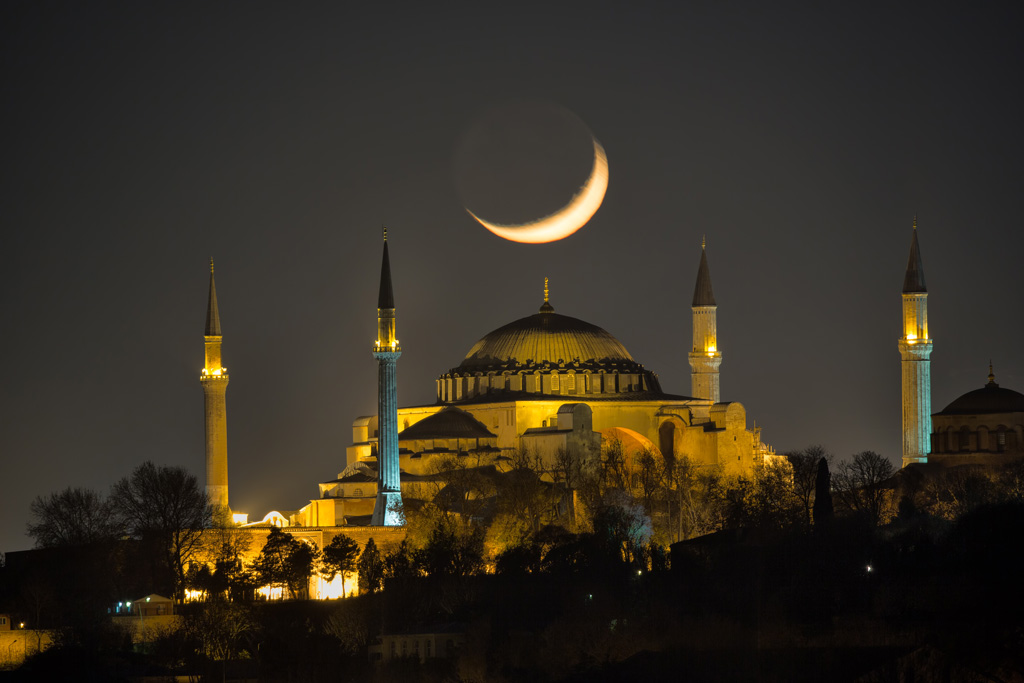
Why such expenses? The will of the emperor is to blame. According to legend, on the day of the consecration of the temple, Justinian entered the cathedral with the words “Solomon, I surpassed you!” It was fundamentally important for the emperor to create a masterpiece, larger than the legendary Jerusalem Temple. And Justinian succeeded. The dome of the building reached 55 meters. Its diameter was 31 meters. The Cathedral of St. Sophia became the largest temple in the world and retained this title until the construction of St. Peter’s Cathedral in Rome.
To decorate the temple to Constantinople, individual parts of the antique buildings were brought to Constantinople. So, for example, 8 old marble columns were brought from Ephesus and Rome. The altar inside the cathedral was richly decorated with gold, precious stones and pearls. The dome of the temple seemed to soar in the air. Streams of light penetrated the room after 40 huge windows.
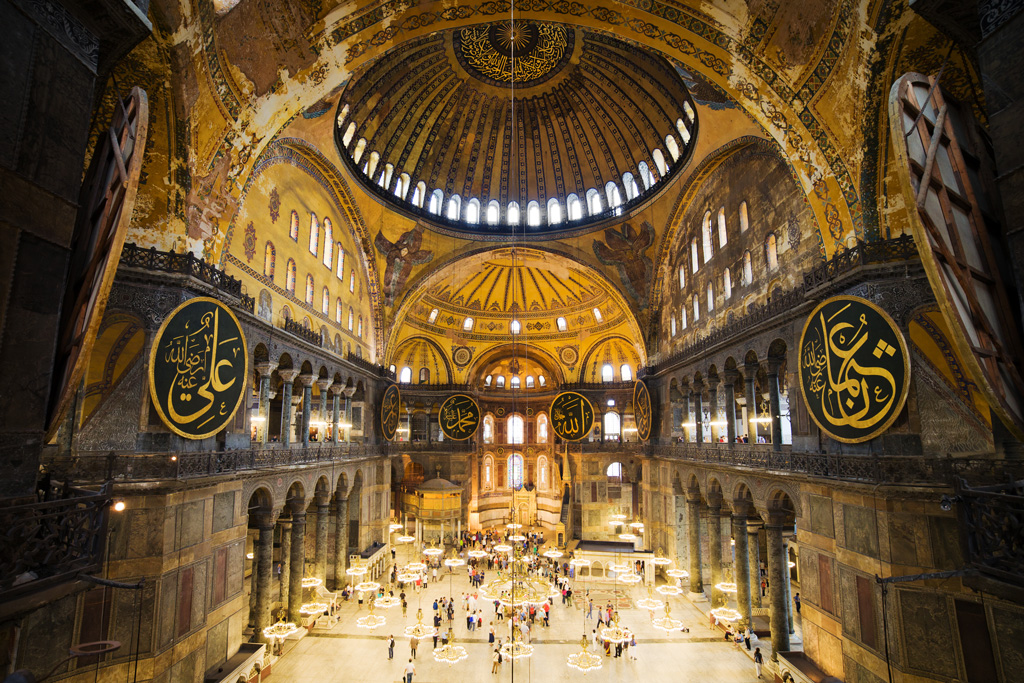
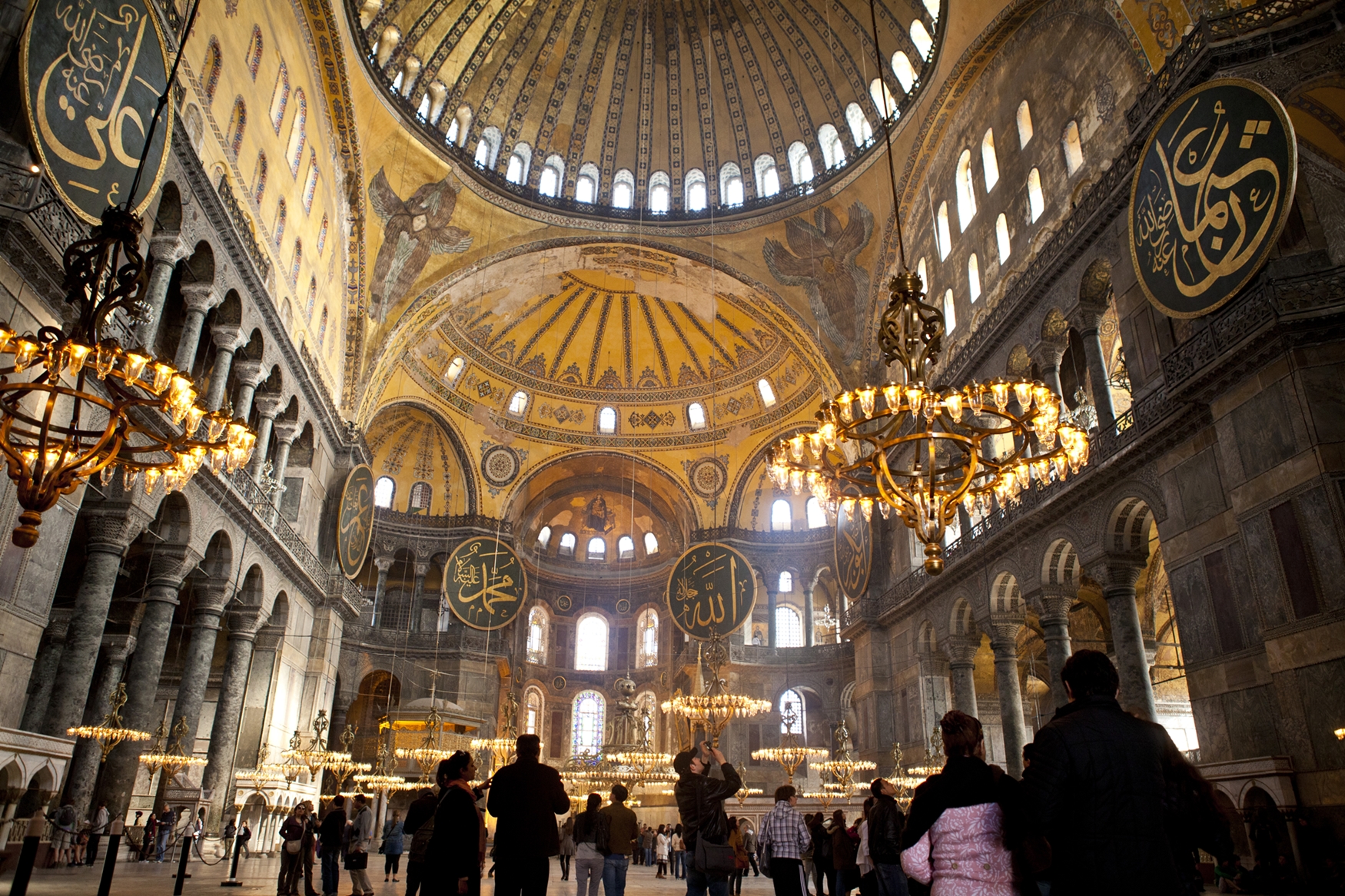
The Christian temple of Ayia-Sofia was until the middle of the 15th century, until the troops of the Sultan Mehmed II took Constantinople. Most churches were mercilessly destroyed by the invaders, but the majestic cathedral survived. The cross on the dome was replaced by Islamic crescent. Two minarets were attached to the building. Later they added two more and strengthened all the minaretes with stone buttresses that have survived to this day. Over the years, several tombs were added to the cathedral for the burial of the sultans. Christian frescoes and a mosaic with the image of praying parishioners were smeared with plaster. Fortunately, it was possible to remove it today. Visitors to the cathedral can again admire the magnificent examples of Byzantine painting.
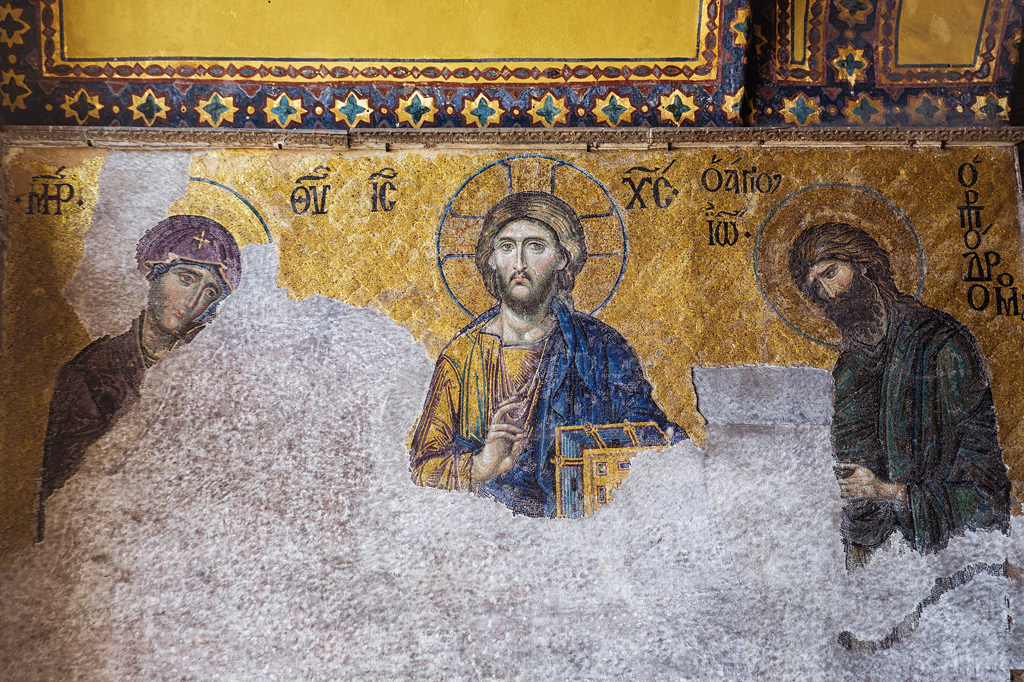
The history of the cathedral is associated with a number of legends. We give some of them.
On a column in one of the premises of the temple, at an altitude of more than two meters, a trace is visible, reminiscent of the imprint of the human palm. According to legend, he was left by Sultan Mehmed who captured the city, leaning on the convoy with his hand. The Sultan rode riding on a horse along the corpses of defeated Christians, so the imprint turned out so high from the floor.
There is a niche of unknown origin in the right side of the temple; If you attach the ear to the wall, noise is clearly heard. According to legend, during the assault of the cathedral, 10 thousand people hid there. They were led by a priest holding a cup in his hands with holy gifts. Suddenly he, reading a prayer, went to the niche and disappeared without a trace. They say that a quiet sound from the niche is the continuation of the prayer of the priest. He prays and waits for the Council to be returned to Christians. At that moment, when the Cross will be ascended over Ayia-Sofia, the holy father will return to the altar and continue the interrupted service.

During the reign of the First President of Turkey, Mustafa Ataturk in 1935, the Aiya-Sofia mosque was transformed into a museum. During the inspection of the cathedral, tightly boarded doors were found. They did not open them, because they feared the output of groundwater, the level of which is very high here and it cannot be reduced. In recent years, archaeologists have found several secret passages and tunnels, allegedly connecting the Aiya-Sophia building with the Topkapa palace-the main residence of the Ottoman Padishahs. Now in the building of the palace is a museum. Its collection has more than 65 thousand exhibits: from porcelain dishes, silver table and personal belongings of the rulers of the Ottoman Empire to the Golden Throne and the Staff, supposedly belonging to Moses.

In 2013, the Turkish parliament discussed the advisability of the transition of the Aiya-Sofia museum to the status of the current mosque, but Patriarch of Constantinople Bartholomew spoke against. He noticed that then it would be more fair to return the church to Christians, but it is better to avoid conflict and maintain its status. The Christian population of Istanbul supported the Patriarch, and Ayia-Sofia remained a museum.
Getting to Istanbul from Russia is simple. The cost of air tickets on a direct flight starts from 5 thousand rubles. You can visit the Cathedral of St. Sophia from 9 to 17 hours. In the summer, the museum is open until 19 pm. The day off is Monday, the museum is also closed during the Holy Feast of Ramadan. The entrance ticket costs 10 euros. You can get to the cathedral by ground public transport or by metro to the Sultananmet station. If you want to visit the main museums of Istanbul on preferential conditions and without queue, buy a museum card Museum Pass Istanbul. It seriously eases the life of tourists.
For a convenient and profitable order of hotels around the world, we recommend using the OneTwotrip service. There you will find more than two million placement objects.

